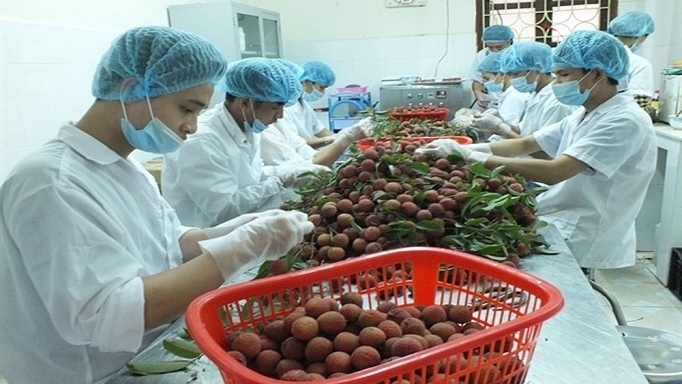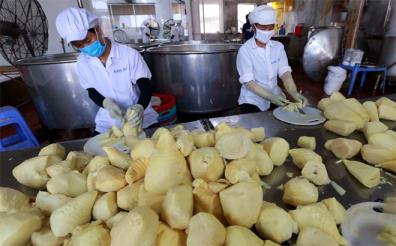Japan has officially opened the door for Vietnamese lychee to directly enter this market in the 2020 crop, according to the Ministry of Agriculture and Rural Development (MARD). The Ministry of Agriculture, Forestry and Fisheries of Japan (MAFF) informed the MARD’s Plant Protection Department of its opening market for Vietnamese “thieu” lychee associated with regulations on plant quarantine in late December 2019.

|
|
Lychee is the fourth fresh fruit of Vietnam, after dragon fruit, mango, and banana allowed to be imported into the Japanese market.
|
Thus, lychee is the fourth fresh fruit of Vietnam, after dragon fruit, mango, and banana allowed to be imported into the Japanese market - one of the world’s most demanding markets in regards to quality standards and food hygiene and safety.
This is a great opportunity to stabilise the production and consumption of lychee while reducing the oversupply during peak harvesting times. In particular, this opportunity is more important in the complicated development of the Covid-19 epidemic that has cause heavy impacts on many types of Vietnamese agricultural products that are currently not being exported to China and some other markets.
However, many stricter requirements are set for our country's lychee growing areas, especially for main lychee hubs such as Hai Duong and Bac Giang, to change their production methods to properly and fully meet the most stringent standards of the Japanese market.
The Plant Protection Department has issued documents guiding localities to proactively and quickly implement requests from partners, particularly accelerating the process of granting areas codes and ensuring the traceability of farming areas.
Accordingly, the minimum registered area is 5ha per coded area and the rate of lychee trees flowering in the coded area is from 70%. In addition, the production diary of lychee gardens must be kept in a record and inspected and granted a code by the Plant Protection Department.
The lychee farming gardens must also apply control methods to deal with Bactrocera dorsalis and absolutely not use plant protection drugs on the banned list.
Furthermore, the package and fumigate of lychee fruits must comply with the regulations on plant quarantine of the MAFF.
Thus, Vietnamese localities with large lychee farming areas should have plans to connect enterprises with planting areas and managing plant quarantine before exporting while monitoring the planting areas and the implementation of other necessary conditions.
In addition, authorised agencies must make efforts to facilitate the implementation of administrative procedures regarding the export of the fruit while farmers should raise their awareness in production and exporters raise their accountability in export activities.
Farmers should strictly abide by importers’ regulations on the production process and exporters must ensure the buying of products meeting all the set requirements to ensure the long-term reputation of Vietnamese lychee as well as other agricultural products that are under negotiation to be exported to other countries.
The penetration into such a fastidious market will be a driving force for Vietnamese agricultural products to escape dependence on established markets and gain confidence to compete at a global level.
NDO

Thanks to the development of distinctive and appealing tourism products in its key tourism regions, Yen Bai Province welcomed over 9 million tourist arrivals during the 2021–2025 period, including nearly 800,000 international visitors. Tourism revenue reached VND 7,189 billion, with an average annual growth rate of 32.7%.

Since 2021, Yen Bai Province has recruited and provided vocational training for 81,504 people. Of these: 6,359 people (7.8%) received college-level training, 12,710 people (15.6%) received intermediate-level training, and 62,435 people (76.6%) received elementary-level training or training under three months. Each year, the province has supported vocational training for 4,000 to 5,000 rural laborers.

Since the beginning of the year, the management of crop seed, fertilizer, and pesticide trading activities in Yen Bai Province has been effectively implemented.

To facilitate taxpayers in fulfilling their tax obligations promptly and in accordance with current tax regulations, while simultaneously strengthening tax administration and preventing revenue loss to the state budget, the tax sector of Yen Bai Province has actively guided household businesses to pay taxes through the eTax Mobile application.








